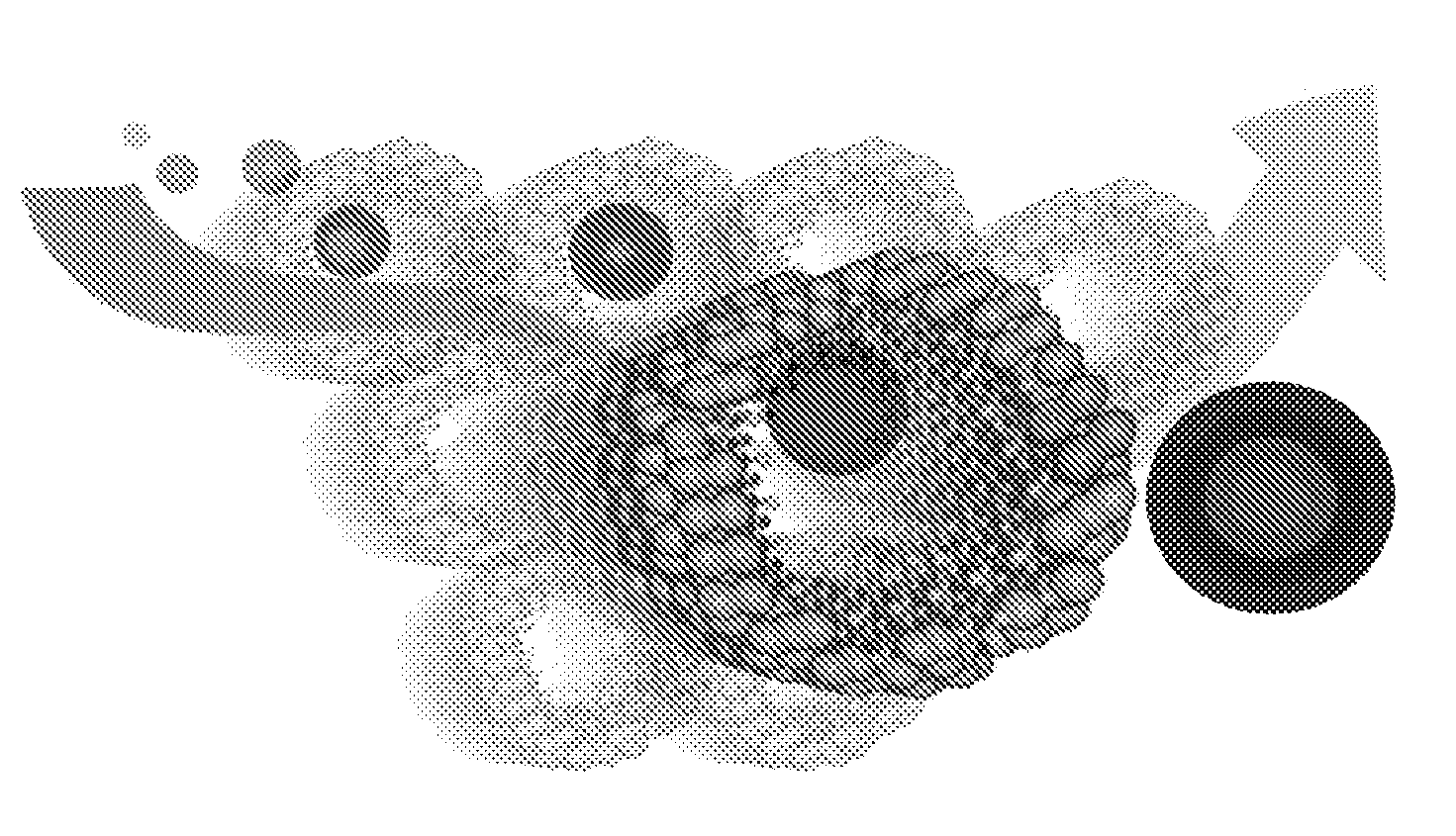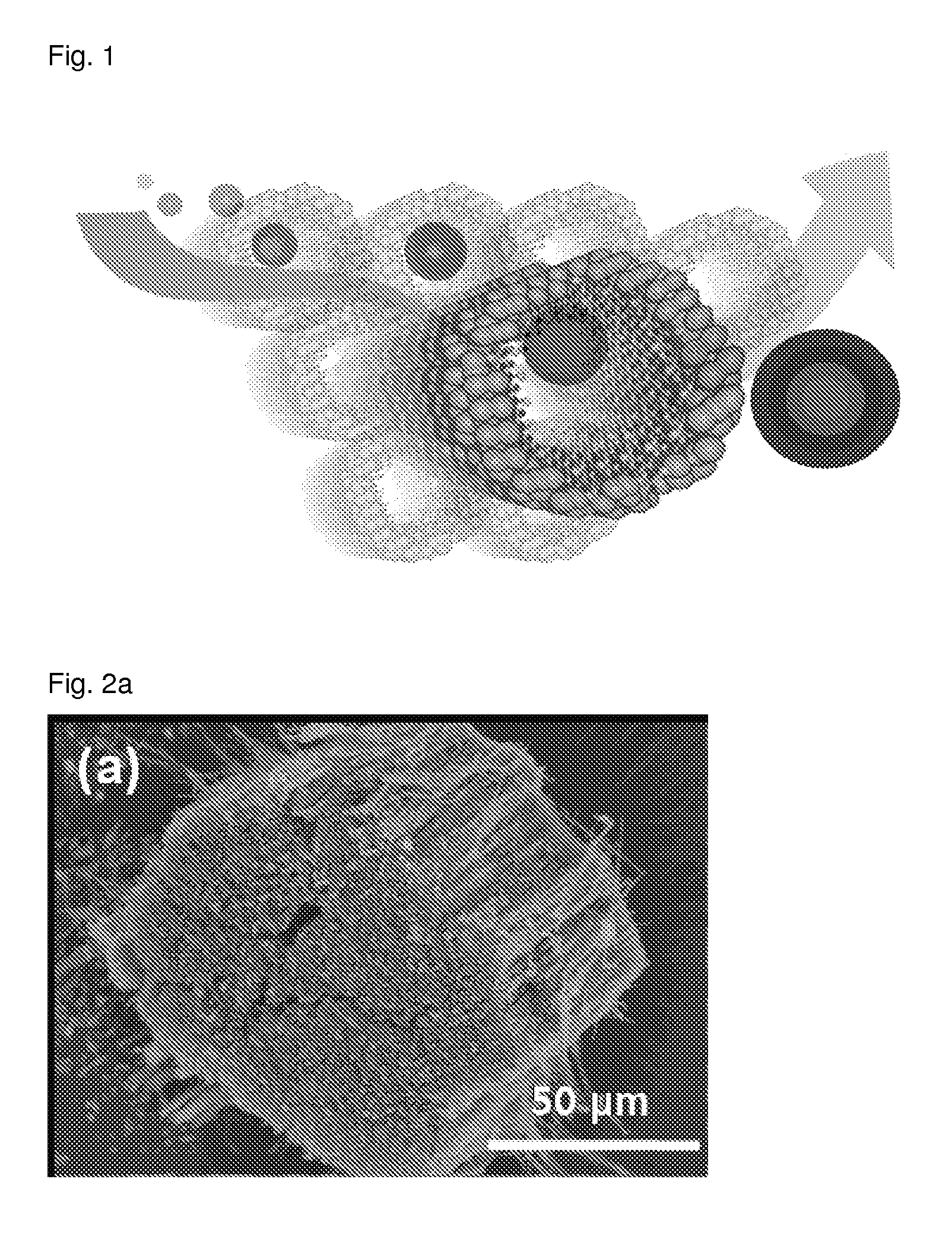Cathode Active Material For A Lithium Rechargeable Battery And A Production Method Therefor
a lithium rechargeable battery and active material technology, applied in the manufacture of electrodes, cell components, final product manufacturing, etc., can solve the problems of pulverization, limited supply of lithium secondary batteries, and large volume changes, and achieve excellent capacity properties
- Summary
- Abstract
- Description
- Claims
- Application Information
AI Technical Summary
Benefits of technology
Problems solved by technology
Method used
Image
Examples
example
Example 1
Preparation of a Solution of Silicon Modified with a Butyl Group
[0094]30 g of SiCl4 (purity 99.999%, Aldrich) and 200 g of a tri(ethylene glycol dimethyl ether) solvent were completely mixed, and then, the mixed solution was added to a solution of sodium naphthalide (100 g). The obtained solution was heated at 400 for 9 hours with refluxing. The solution was mixed with 90 Ml of butyl lithium (99%), and stirred overnight. At this time, n-butyl lithium was reacted with SiCl4 to form silicon modified with a butyl group. The solvent and naphthalene were removed by heating to 120 under vacuum, using a rotary evaporator, and NaCl and LiCl by-products were removed by partitioning with an excessive amount of n-hexane and water. The obtained product, silicon modified with a butyl group, was a light yellow viscous gel, to which n-hexane was added to decrease viscosity and form a solution of silicon modified with a butyl group.
Preparation of Negative-Electrode Active Material for Lith...
example 2
Preparation of Negative-Electrode Active Material for Lithium Secondary Battery
[0096]A porous anodized alumina membrane (Whatman, Anodisc,φ˜300 nm) was used, and it was immersed in a solution of silicon modified with a butyl group, prepared by the same method as Example 1, at 25° C. for 2 minutes. Subsequently, the resultant product was dried and heat treated at 150° C. for 12 hours. This process (immersion and drying) was repeated additional 4 times to obtain a silicon-butyl / alumina nanotube complex. The complex was further heat treated at 900° C. for 3 hours under vacuum. The resultant product obtained by the heat treatment was treated with an aqueous solution of 3M NaOH for 6 hours, and washed several times with distilled water and ethanol, thereby removing the porous alumina membrane from the complex. Finally, the product was vacuum dried at 100° C. overnight to obtain nanotubes. The nanotube was measured to have an average cross section diameter of approximately 180 nm, an oute...
example 3
Preparation of Negative-Electrode Active Material for a Lithium Secondary Battery
[0097]A porous anodized alumina membrane (Whatman, Anodisc,φ˜300 nm) was used, and it was immersed in a solution of silicon modified with a butyl group, prepared by the same method as Example 1, at 25° C. for 2 minutes. Subsequently, the resultant product was dried and heat treated at 200° C. for 1 hour. This process (immersion and drying) was repeated additional 3 times to obtain a silicon-butyl / alumina nanotube complex. The complex was further heat treated at 1000° C. for 3 hours under vacuum. The resultant product obtained by the heat treatment was treated with an aqueous solution of 6M NaOH for 5 hours, and washed several times with distilled water and ethanol, thereby removing the porous alumina membrane from the complex. Finally, the product was vacuum dried at 100° C. overnight to obtain nanotubes. The nanotube was measured to have an average cross section diameter of approximately 250 nm, an out...
PUM
| Property | Measurement | Unit |
|---|---|---|
| thickness | aaaaa | aaaaa |
| thickness | aaaaa | aaaaa |
| cross-section diameter | aaaaa | aaaaa |
Abstract
Description
Claims
Application Information
 Login to View More
Login to View More - Generate Ideas
- Intellectual Property
- Life Sciences
- Materials
- Tech Scout
- Unparalleled Data Quality
- Higher Quality Content
- 60% Fewer Hallucinations
Browse by: Latest US Patents, China's latest patents, Technical Efficacy Thesaurus, Application Domain, Technology Topic, Popular Technical Reports.
© 2025 PatSnap. All rights reserved.Legal|Privacy policy|Modern Slavery Act Transparency Statement|Sitemap|About US| Contact US: help@patsnap.com



